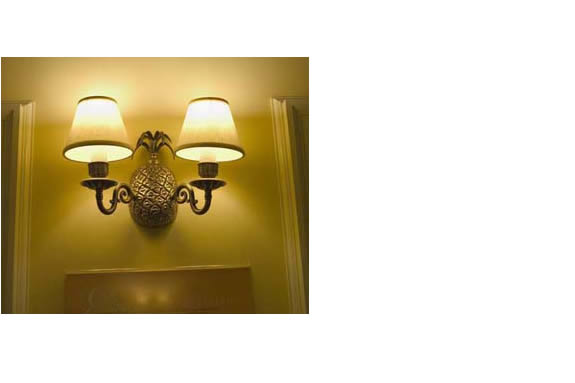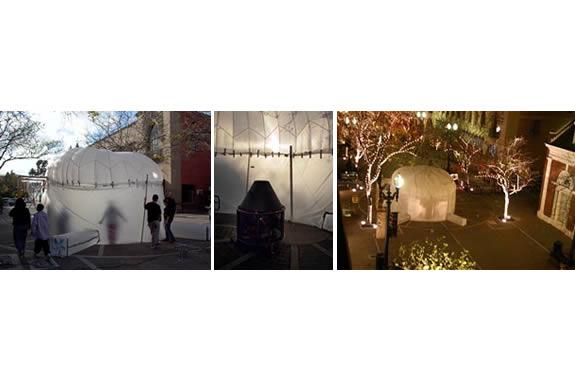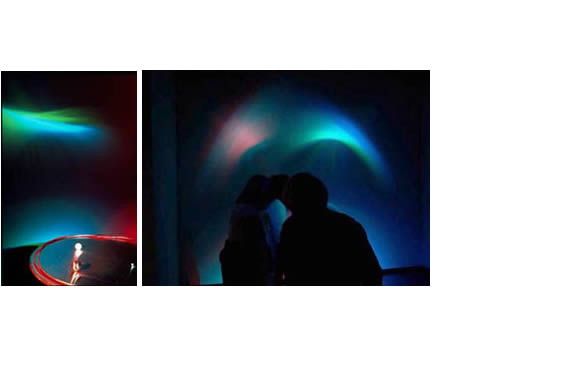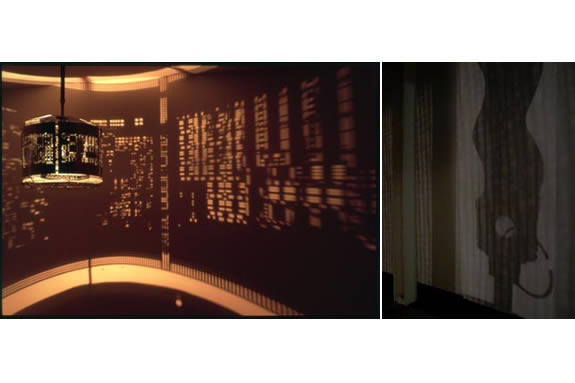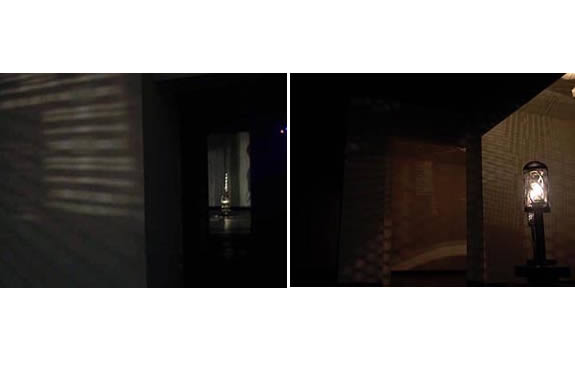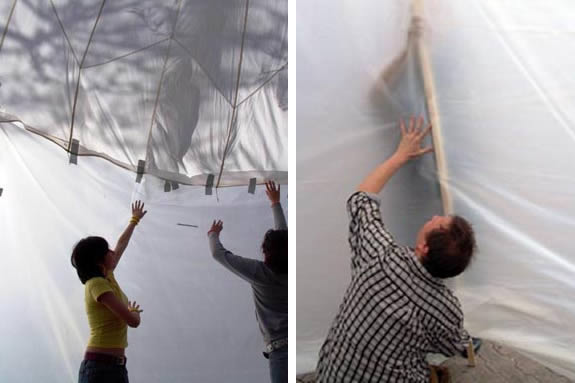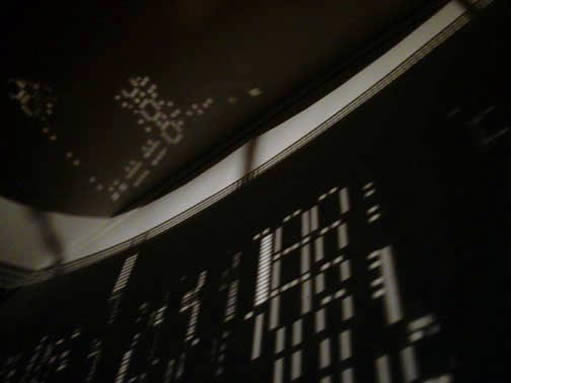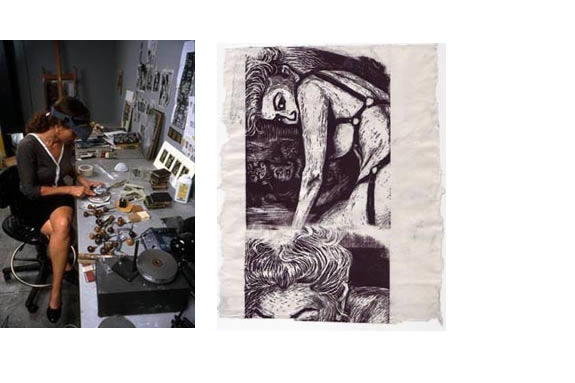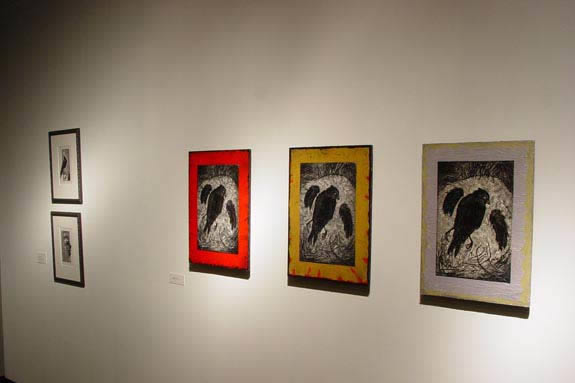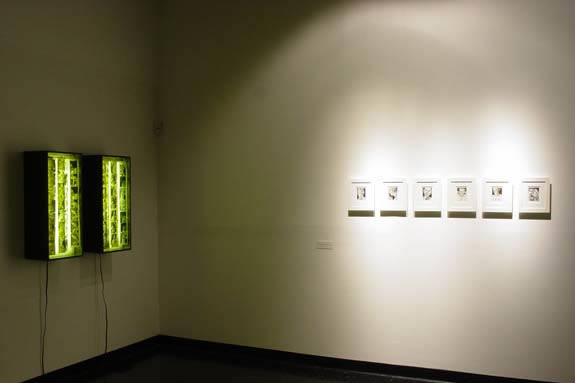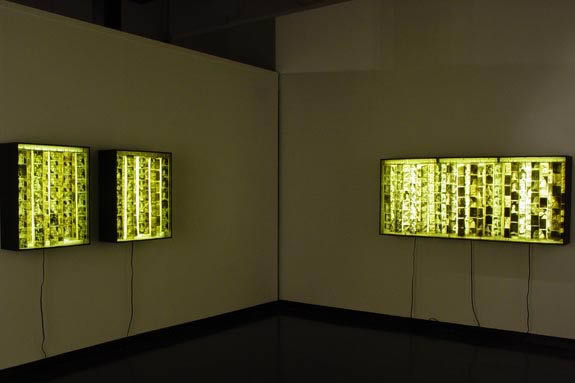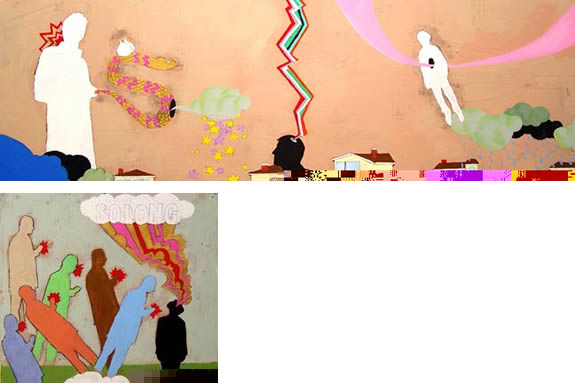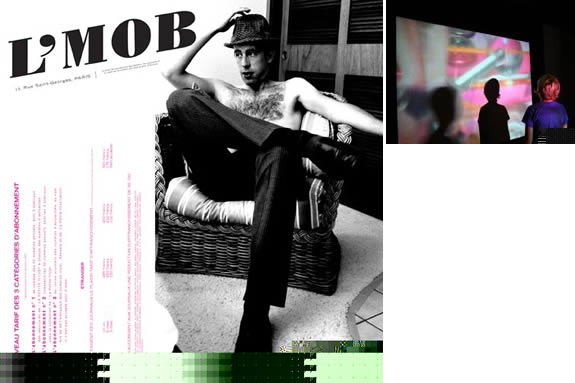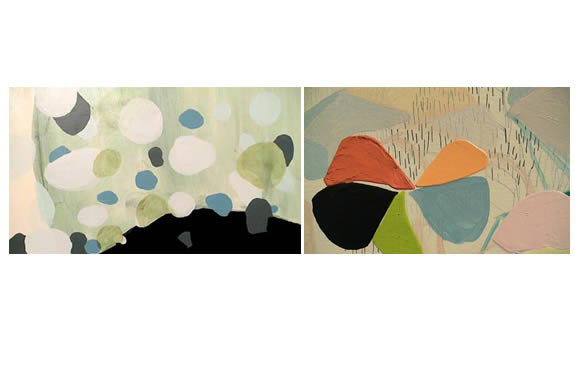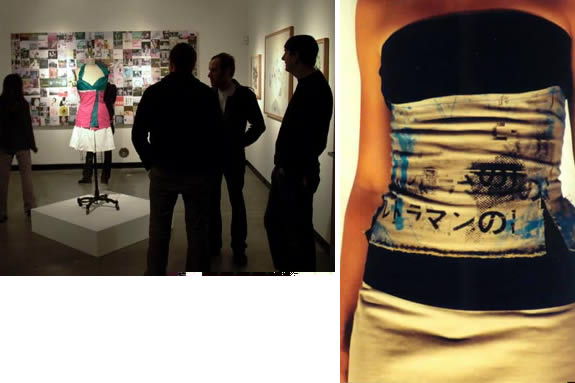2005
2018; 2017; 2016; 2015; 2014; 2013; 2012; 2011; 2010; 2009; 2008; 2007; 2006; 2005; 2004; 2003; 2002; 2001; 2000; 1999
Education Gallery
Ceramics and Glass
Invitational
December 3 – December 31, 2005
• • • • • • • • • • • • • • • • • • • • • • • • • • • • • • • • • • •
Education Gallery
The Glass Show 2006
December 2 – January 14, 2006
Featuring over 20 Contemporary glass artists including:
Leslie Davis, Russ Huff, Charlie Keeling, Karen Kennedy, Manny Krokowski, Patty Lindsey, Chetna Mehta, Lana Merhaut, Megan Myhra, Christina Morgan, Robin Provart-Kelly, Hiromi Takizawa, Jason Chakravarty, Alan Iwamura, Solange Ledwith, Adam Mostow, Susie Peck, and Greg Vriethoff
Jewelry artists:
Erin Nomura, Stuart Breidenstein, Erin Dolby, Alyssa Wiens and Cristy Rose.
Stunning artwork for sale!
• • • • • • • • • • • • • • • • • • • • • • • • • • • • • • • • • • •
Main Gallery
The Saddest Place on Earth
The Art of Camille Rose Garcia
October 1 – December 18, 2005
Camille Rose Garcia was born in 1970 in Los Angeles, California and grew up in the generic suburbs of Orange County, visiting Disneyland and going to punk shows with the other disenchanted youth of that era. Her paintings of creepy cartoon children living in wasteland fairy tales are critical commentaries on the failures of capitalist utopias.
Creative influences include Phillip K. Dick, William Burroughs, Henry Darger, Walt Disney, as well as politically aware bands like The Clash and Dead Kennedys. Her work has appeared in Flaunt Magazine, Rolling Stone, Juxtapoz, and Paper Magazine, among others. Her art has been exhibited internationally in Spain, Germany and Italy, as well as in Los Angeles and New York. She currently lives in Los Angeles. Camille can be reached through her website, camillerosegarcia.com., or through the Merrry Karnowsky Gallery in Los Angeles.
Book signing 6-7 p.m.
Full color 134 page hardcover book featuring more than 100 images and sketches.Featuring essays by: Mike McGee, Lynn Zelevansky and Chon Noriga.
Bands performed at the opening:
Geisha Girls, The Vice Versa, FM BATS and The Matachine.
• • • • • • • • • • • • • • • • • • • • • • • • • • • • • • • • • • •
Project Room Gallery
Fashion Front
Hip – Energetic – Innovative
October 1 – December 18, 2005
CSUF Grand Central Art Center will presents an exciting two part-exhibition and runway show Fashion Front featuring five hip, energetic and innovative contemporary Southern California design houses. Quickly receiving international attention, these now-minded designers create vogue urban wear inspired by the past and designed for the 21st century. The exhibition will document the designer’s creative process with multi media presentations, photographs, drawings and wearable objects.
RUNWAY SHOW:ONE NIGHT ONLY
November 5th, 2005
Begins promptly at 8pm
Artists Village promenade on 2nd Street in front of Grand Central Art Center
• • • • • • • • • • • • • • • • • • • • • • • • • • • • • • • • • • •
Education Gallery
Unnaturally Marvelous
Featured Artists: Mathew Price, Christiane Cegavske and Brent Gothold
October 1 – November 6, 2005
• • • • • • • • • • • • • • • • • • • • • • • • • • • • • • • • • • •
Education Gallery
The Bird Show
Artist Invitational
August 6 – September 25, 2005
Featuring: Joe Diebes, Rosemary Covey, Kurt Simonson, Jim Jenkins, Kylie Grater, Dan Callis, Sage Vaughn, Alyssa Wiens, Ron Reihl, Corey Stien, Dennis Cubbage, Anthony Gordon, Sara A Brum, Jack DeLap, Sara Simon, JJ Garza, Carlota Haide, Julia Goodman, Christoph Brown, davidmichaellee, Tracy Duran , Amy Caterina, Andrea Harris, Eric Jones, Jim Lorigan, Diana Markessinis, Dorthy Magallon, Richard Mansfield, Diana Donaldson, June Boone, Janelle Morte, Gary Martin, and Brian Collier.
• • • • • • • • • • • • • • • • • • • • • • • • • • • • • • • • • • •
Main Gallery
Exquisite Electric
Featuring: Jim Campbell, Adam Chapman, Marianne Magne, Tony Oursler, John Slepian and Camille Utterback
July 2 – September 18, 2005
It wasn’t until nearly the end of the twentieth century, about 150 years after photography was invented, that artists began to use this medium with enough innovation to overshadow its initial technical dazzle. The relationship between fine art and electronic/digital media, or what has come to be known as “new media,” has taken a somewhat different trajectory. The advent of digital technology has opened up great possibilities for visual imagery, and artists have been among the first to appreciate and explore the new capabilities. “It’s like looking at the storm as it happens,” according to Tom Leeser, an experimental filmmaker and head of the CalArts photography and media program. [i]
As we began to develop the concept for this exhibition, we had a number of conversations about the state of new media today. Much of the new-media art we looked at struck us as somewhat sterile; some of it fell victim to the affliction that besieged photography’s struggle as a fine-art medium for so long: the art wasn’t as interesting as the medium itself. We agreed that the new-media art we found most engaging were works in which the interface between the human and the electronic was a pivotal aspect of the artists’ concerns.
The works in this exhibition concentrate on perceptions, emotions, and what it is that makes us feel human; relationships between information and meaning; and the deconstruction and reconstruction of the human body. The artists we have selected use the tools of new media in innovative and poetic ways. Poetry and technology may seem incongruous, yet these artists have succeeded in locating their work at precisely this intersection. Technology has become such an important part of our lives that the very definition of “human” is being transformed by this relationship. Perhaps no issue is more germane to our continued existence as human beings than the nature of our relationship with the new technologies we increasingly embrace.
In his cautionary new book American Mania, Peter Whybrow, UCLA professor of psychiatry and bio-behavior and director of the UCLA Neuropsychiatry Institute, proposes that the fast-paced lifestyles of cosmopolitan individuals in America today — constantly plugged in via pager, laptop, and cell phone; fueled by junk food; propelled by caffeine; deprived of sleep; guided by unchecked ambition; and motivated by an insatiable need for more — pushes the limits of the human neurological system. Our relationship with technology has sped up the rate and relentlessness with which we receive information, contributing to “increased prevalence of anxiety, panic, and social phobia in America.”[ii]
In 1965 Gordon Moore, who would become co-founder of Intel, postulated that the number of transistors per square inch of integrated circuit would essentially double every 18 months. This now-famous theory became the basis for Moore’s Law. The extrapolation of this theory is that the speed of processors will double every two years or so, and, as has been considered by a multitude of authors, if Moore’s Law holds true-which it has to this point–by the middle of the twenty-first century the computer will surpass the human brain in terms of the speed at which it processes information.
Since poly-scientist Norbert Weiner coined the modern usage of the term cybernetics in the late 1940s, theorists have been considering the implications of the merger between man and machine and, by extension, man and computer. In The Cyborg Handbook, a number of writers consider the ramifications of the relationship between humans and electronic components, with viewpoints ranging from scientific and philosophical to science fiction. Some of the contributors discuss the degree to which the human race has already become and is increasingly becoming cybernetic-think here of artificial organs and animatronic limbs as just a starting point-and the political and philosophical implications of these changes today and in the future.[iii]
The most radical supposition regarding the relationship between man and the computer is that cybernetic beings will be the next logical step in the evolution of life forms on the planet and will survive beyond human extinction. This possibility is most provocatively fictionalized in Dan Cameron’s film Terminator (1984), now a cinematic franchise starring California’s governor, Arnold Schwarzenegger. While this potentiality might seem far-fetched, a surprising number of respected thinkers seriously entertain the theory.
N. Katherine Hayles suggests in How We Became Posthuman that, as the computer becomes an ever-significant tool in our daily lives, the distinction between our traditional notion of human and artificial is becoming increasingly nebulous.[iv] Hayles recounts a scenario written by Carnegie Mellon professor and internationally celebrated robotics expert Hans Moravec:
[Moravec] argues it will soon be possible to download human consciousness to a computer. To illustrate, he invents a fantasy scenario in which a robot surgeon purees the human brain in a kind of cranial liposuction, reading the information into a computer. At the end of the operation, the cranial cavity is empty, and the patient, now inhabiting the metallic body of the computer, wakens to find his consciousness exactly the same as it was before.[v]
Hayles, a professor of English at UCLA who holds a degree in chemistry, was so appalled and intrigued by the fact that a scholar such as Moravec would seriously entertain such an idea that she spent six years “researching archives in the history of cybernetics, interviewing scientists in computational biography and artificial life, reading cultural and literary texts concerned with information technologies, visiting laboratories engaged in research on virtual reality, and grappling with technical articles in cybernetics, information theory, autopoiesis, computer simulations and cognitive science.”[vi]
Hayles concludes that “the human is giving way to a different construct called posthuman.”[vii]
The artists in this exhibition straddle the gap between human and artificial constructs. They gracefully move back and forth between the evolving philosophical distinctions between creating and experiencing electronic images and forms and becoming electronic information.The title exquisite electric is an amalgamation of allusions. Electricity, of course, powers the new media used by the artists in this exhibition, but it is also fundamental to the function and life force of the human body. In Leaves of Grass, Walt Whitman pays homage to the joy, complexity, and virility of the human body and spirit with the famous line, “I sing the body electric.”
Exquisite corpse, or cadavre exquis, is a parlor game invented by the Surrealists in the early twentieth century. Participating artists drew approximations of the human form by folding a piece of paper in four horizontal sections and having one artist draw in each section, starting with the head portion; then each of the other artists drew a section without seeing the previously drawn portions of the figure. The resulting collaborative drawings routinely featured bizarre juxtapositions of imagery that often only scantly resembled the human body but always celebrated the human imagination. In exquisite electric, the artists turn their imaginations toward new technologies and give us fresh avenues to considering what it means to be human at the beginning of the twenty-first century.
[i] In Suzanne Muchnic, “Art on the move… Art that won’t stand still,” Los Angeles Times, 24 April 2005, E1.
[ii] Peter Whybrow, American Mania: When More Is Not Enough (New York: Norton, 2005).
[iii] The Cyborg Handbook, edited by Chris Hables Gray, with the assistance of Heidi Figueroa-Sarriera and Steven Mentor (London and New York: Routledge, 1996).
[iv] N. Katherine Hayles, How We Became Posthuman (Chicago: University of Chicago Press, 1999), 1. Hayles refers to Hans Moravec, Mind Children: The Future of Robot and Human Intelligence (Cambridge, Mass: Harvard University Press, 1988).
[v] Hayles, ibid.
[vi] Hayles, 2.
[vii] Hayles, ibid.
• • • • • • • • • • • • • • • • • • • • • • • • • • • • • • • • • • •
Education Gallery
Connected by Chance
Featuring Karla Leopold, Jeffery Crussell, Erica Ryan and Kurt Simonson
July 2 – July 31, 2005
• • • • • • • • • • • • • • • • • • • • • • • • • • • • • • • • • • •
Main Gallery
Major Art/Minor Artists 2005
Santa Ana Unified School District
June 4 – June 19, 2005
This exhibition will showcase the artwork of students in the SAUSD SPECIAL STUDIO art program.
This year’s student artists, grades 4 & 5, are from Grant, Harvey, Pio Pico, and Thorpe Fundamental Elementary Schools.
SPECIAL STUDIO serves students selected for potential artistic achievement from regular, gifted and talented, and special education programs. The students work weekly (20 one and one-half hour lessons) with artists Cheryl Michelon and Helen Seigel at their school site. One hundred students are participants in the 04/05 program. On exhibit will be approximately five hundred works of art in various media including: drawing, painting, printmaking, collage, and mixed media. The artwork ranges from representational to abstract and reflects the exposure of the students to many types of art and creative stimuli.
• • • • • • • • • • • • • • • • • • • • • • • • • • • • • • • • • • •
Project Room Gallery
Greg Drasler
Artist-in-Residence and Lecture
May 26 – June 10, 2005
Obsessed with interiors, painter Greg Drasler creates rooms that refuse to leave the viewer’s mind. Through these large-scale illusionary images, Drasler poses the question: inasmuch as we make and reinvent our surroundings, is it not ourselves we are seeking to organize and know? The installation at Grand Central Art Center will feature five paintings on hand painted wallpaper style installation walls. The series featured is titled Tattoo Parlor, A publication is being produced for this exhibition.
• • • • • • • • • • • • • • • • • • • • • • • • • • • • • • • • • • •
Education Gallery
Problems with Authority: Mentor/Mentee
Artists: David Michael Lee, Tom Dowling and Eric Beltz. With tattooing by Colin Dowling.
May 7 – May 29, 2005
• • • • • • • • • • • • • • • • • • • • • • • • • • • • • • • • • • •
Main Gallery
Raw, Boiled and Cooked
Comics on the Verge
April 2 – May 22, 2005
Rick Altergott, Ho Che Anderson, Max Andersson, Peter Bagge, Lynda Barry, Ivan Brunetti, Charles Burns, Dave Cooper, Julie Doucet, Debbie Drechsler, Mary Fleener, Renee French, Bill Griffith, Gilbert Hernandez, Jamie Hernandez, Peter Hoey + Maria Hoey, Kaz, Peter Kuper, Mark Landman, Carol Lay, Mark Martin, Mats!?, David Mazzucchelli, Tony Millionaire, Mark Newgarden, Gary Panter, Archer Prewitt, Brian Ralph, Ron Rege, Jr., Spain Rodriguez, Jonathon Rosen, Richard Sala, David Sandlin, Art Spiegelman, Ted Stearn, Chris Ware, Steven Weissman, Mack White and Jim Woodring.
Resurrection III. May 7th 8 a.m – evening.
A Tribute to the Santa Ana Drags. The ACES So Cal are please to present in collaboration with CSUF Grand Central Art Center their third hot rod and custom car show. Pre ’64 Hotrods and Customs, More than 6 live bands and much more. Located in the Artists Village in front of the CSUF Grand Central Art Center and the corner of 2nd and Sycamore
• • • • • • • • • • • • • • • • • • • • • • • • • • • • • • • • • • •
Education Gallery
Media Morph
Karen Feuer-Shwager, Elizabeth Nees and Caroline Weik
April 2 – May 1, 2005
Jewelry: Corbin Poorboy and Jenn Paterson
• • • • • • • • • • • • • • • • • • • • • • • • • • • • • • • • • • •
Education Gallery
[shudder] release
Amy Caterina, Leonard Correa, Tarah Dowdy, Edwin Maguire, and Leah Dankerson
March 5 – March 25, 2005
Jewelry: Aimee Alu
Installation shots include Edwin Maguire and Leonard Correa participating in an Artist’s lecture with the After School Arts program.
• • • • • • • • • • • • • • • • • • • • • • • • • • • • • • • • • • •
Main Gallery
Kit Kube
Critical Mass
February 5 – March 20, 2005
Critical mass – n. 1. the amount of a given fissionable material necessary to sustain a chain reaction, 2. an amount necessary or sufficient to have a significant effect or to achieve a result. (1940-45) – Webster’s Dictionary
Just as the Surrealist artists at the beginning of the twentieth century incorporated machine parts and imagery to document the pervasiveness of the Industrial Age, Kit Kube forms sculptures from the detritus of southern junkyards to mark the closure of American industrialism and the development of a new order.
Drawn to the efficient beauty of fabricated industrial parts, Kube scavenges scrap-metal yards to find remnants from the textile industry. These industrial components, once animated within textile mills, become reactivated by Kube with small motors or hand-generated kinetic motion. Adding illumination, Kube sculpts with light that perforates grids, circuit boards, and filters to project a fine, patterned webbing that envelops viewers as they enter these environments.
Through the coalescing of object, movement, light and shadow, metaphorical content emerges in these sculptures and environments. The paths of shadows and the movement of the objects themselves are almost always circuitous, bringing to mind macro and micro forces-for example, the planets’ motion within the solar system and the attraction and repulsion of electrons within atoms.
Kube employs these sculptural objects to create a commentary on the impact of the laws of nature and science on contemporary life, such as how we are affected by invisible forces and how scientific developments often spawn urgent questions of ethical applications. In his sculptures In-Vitro and Test Tube Mother, Kube pays homage to the technology leading to the first “test tube baby,” Louise Joy Brown, who was born in England in 1978. This successful in-vitro conception marked the beginning of scientific advancements that gave birth to a range of complex applications of genetic engineering, including the use of human stem cells and cloning.
Circadian Snare is also a commentary on life. Kube probes metaphysical rather than ethical issues in this sculpture of projected light and pattern as he contemplates the soul’s willingness to be, in his words, “snared to take form.” Subjected to an array of physical laws, the incarnated soul is drawn to the attraction of life as well as the limitations of physical time and space. Live Bait, likewise, mimics the experience of being captivated. In this instance Kube uses a suspended cricket cage through which he projects light to create an environment in which the viewer has the sense of being encased like a small insect.
Finally, Kube also reminds us of our human and animal natures-how we take comfort in camaraderie and gather pleasure from watching the rhythmic movements of ocean waves or the meditative flames of a bonfire. Narrative and Collective are interactive works, set into motion as they are spun by viewers. Casting soothing patterns, and perhaps inspiring dialog, these sculptures may evoke the elemental experiences of the first humans gathering in a critical mass, gleaning warmth and comfort from fire, light, and companionship.
Carla M. Hanzal
Curator of Contemporary Art
The Mint Museums, Charlotte, NC
Kinetic Speculation
This is a great time to be a kinetic sculptor. It’s the end of an age. With the decline of manufacturing industries, especially the textile mills, there is a supply of interesting materials flowing through scrap yards in the South.
I frequently visit these scrap yards to prospect through the rivers of stuff. The majority of it is ugly, dirty, and even hazardous. There may be a toxic fire burning there, men driving heavy machinery right behind me as I lean over a barrel or a box on my belly with my feet hanging over. But I’m drawn to these objects, which are artifacts to me, artifacts with a history.
Somebody designed these things to exacting specifications. There was an engineer who drew up the parts and sent them out to specs. Someone bid on them; they priced, manufactured, and used then for years. They were worth something back then and they’re worth something now- according to the scrap yard, usually about a dollar a pound. But to me, they have a much higher value.
I see what it took to produce them; I see the jobs, I see the agriculture, and then once it touches on something like agriculture, it just keeps going back – to cotton, here in the South, and slavery. There’s a rich history here. There’s often an elegance of simplicity too, in the design of these objects, just like there’s elegance in the way the universe works.
If a thing does its job, you’ve got to respect that. For me, it’s an endeavor. I’m constantly training myself to recognize intrinsic beauty in these artifacts, and if I see that, then I think of their esthetic potential – how will they look in space? What would be the best angle to view them at? What can they become with the addition of motion and light? My interest is not the thing itself because, you know, the thing is just a thing. I find something attractive and intriguing; position it so that its sensual, almost alluring, and then animate it; take hard, cold stainless steel or another metal and then play off it with light and kinetics and turn it into a warm, fluid motion that envelops you.
There’s an intimate relationship created as these artifacts speak, together with the movement of light and shadow, of the motions and emotions of life. I can purchase a 420 – pound stainless steel dying spool from a mill out of the stream of stuff in a scrap yard, seeing the hands it passed through. I can envision it in space, set to rotating at a 22-degree angle by the wind or the gentle push of a person, threads of light emanating through it into its environment. And somehow, the completed sculpture can encapsulate the common experiences of getting up and going to work every day, the relationships within society and cultures, and even the collective unconscious.
These undertakings are adventures to me. I don’t know where they’ll take me. I get ideas and work with them and some of them fail, but I get something out of them. And a lot of times things turn out better than I expected. There’s feedback from each component of a piece- the material has a say. It’s a speculation on my part- monetary, physical, and spiritual, a speculation that’s passion driven. It’s the most rewarding experience I can imagine.
– Kit Kube
• • • • • • • • • • • • • • • • • • • • • • • • • • • • • • • • • • •
Project Room Gallery
Rosemary Feit Covey
Artist-in-Residence
February 5 – March 20, 2005
Rosemary Feit Covey has exhibited both in the United States and internationally, including solo exhibitions in Argentina, Switzerland, the Butler Institute of American Art, as well as other solo and group exhibitions.
Collections include the Corcoran Gallery of Art; the New York Public Library Collection of Prints and Drawings; the Papyrus Institute, Cairo, Egypt; the National Library of Australia, Canberra; The National Museum of American History; Georgetown University Library Print Collection; Harvard University Library; and Princeton University Library.
She was a 1998 recipient of a Rockefeller Foundation Grant. Ms. Covey has been commissioned by The New York Times and The Washington Post and has illustrated many books. She has given lectures at universities in China, Interlochen Center for the Arts, the National Museum of Women in the Arts, the University of Wyoming, the International Monetary Fund, as well as other institutions in this country and abroad.
Born in Johannesburg, South Africa, Rosemary Feit Covey lives in Alexandria, Virginia.
• • • • • • • • • • • • • • • • • • • • • • • • • • • • • • • • • • •
Education Gallery
Easy Action, Multi media work
featuring D. Ryan Callis, Matt Maust, Tim McMullen, Rebecca Banghart, Corban Poorboy
February 5 – February 27, 2005
• • • • • • • • • • • • • • • • • • • • • • • • • • • • • • • • • • •
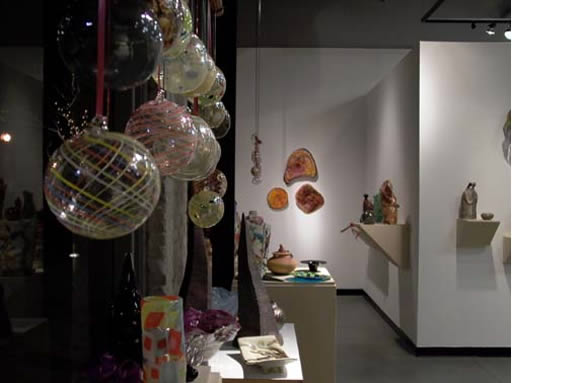
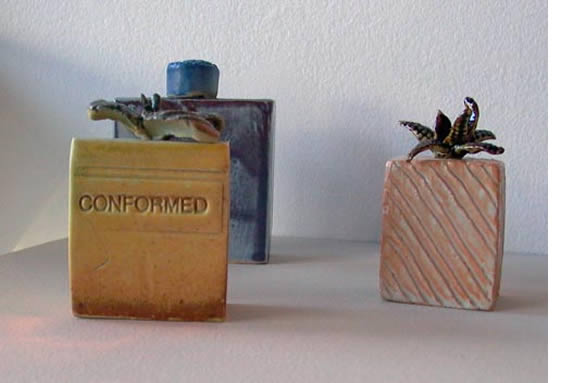
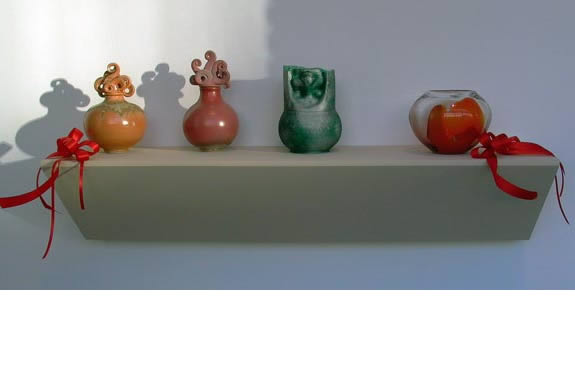
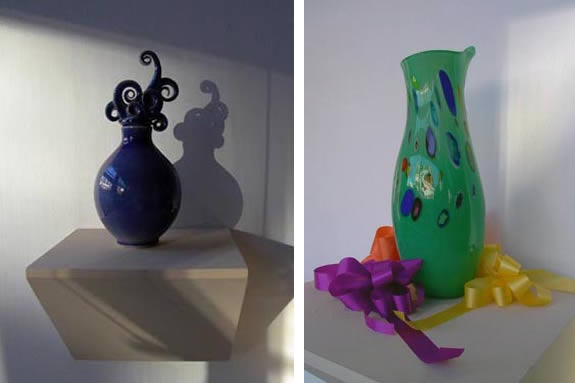
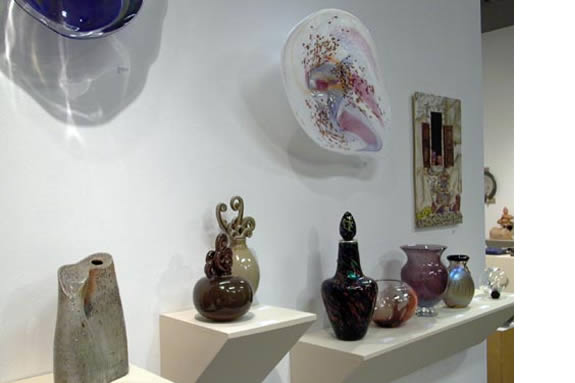
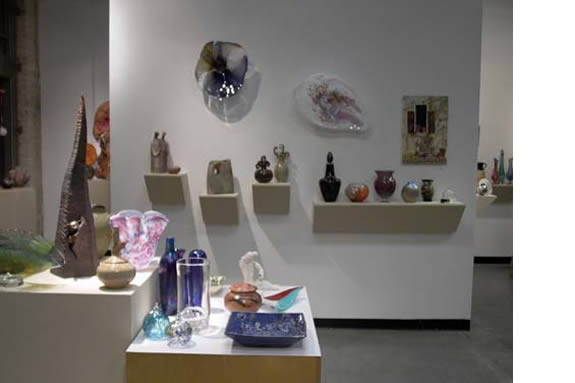
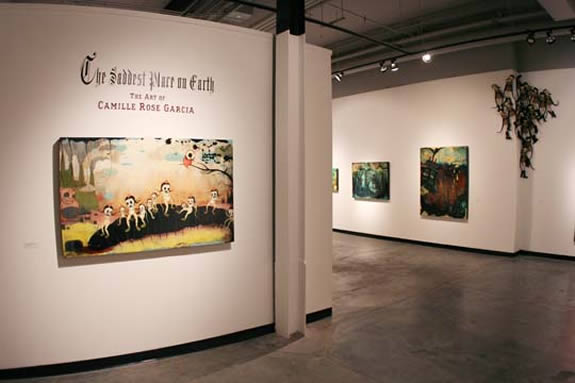
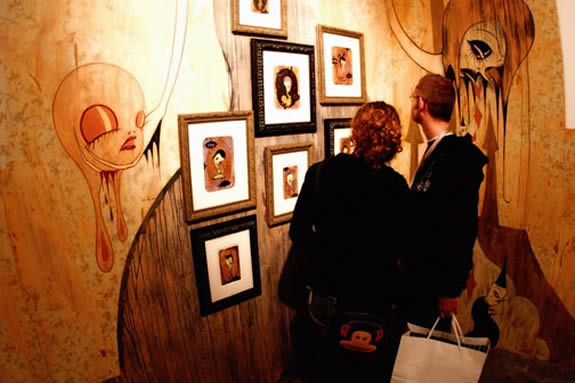
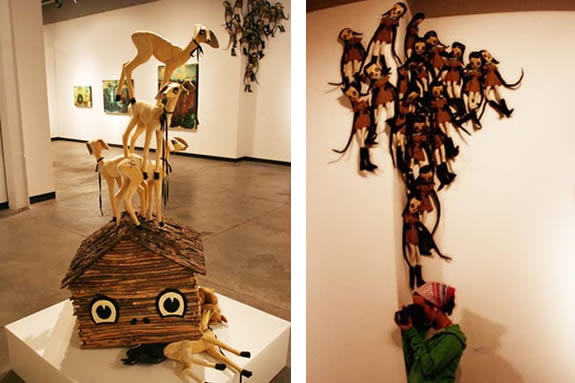
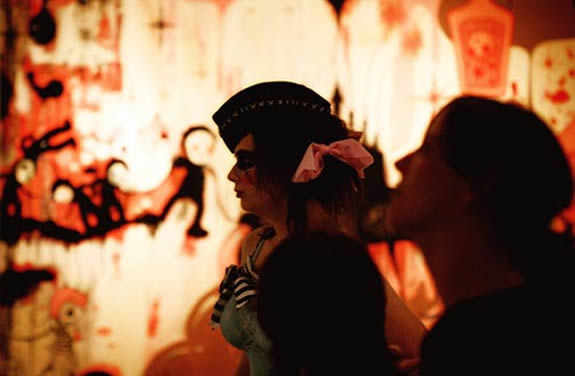
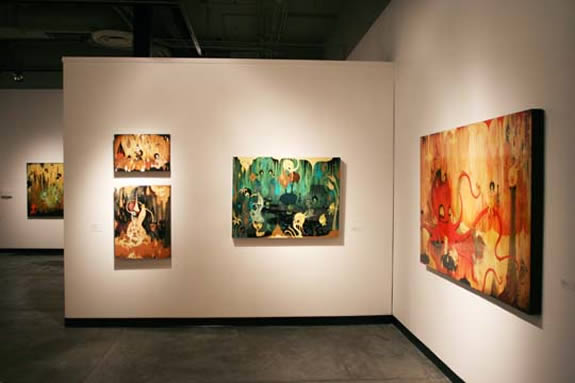
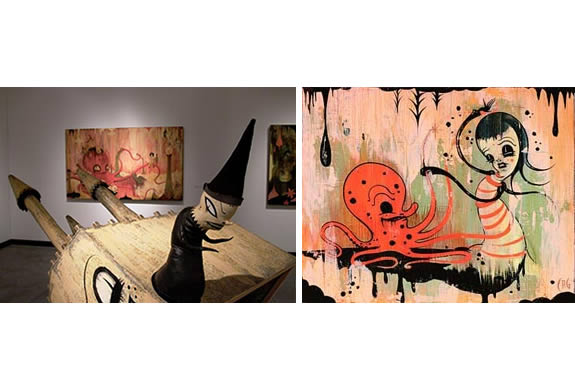
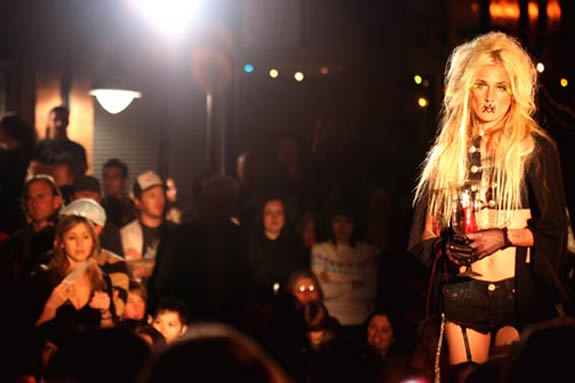
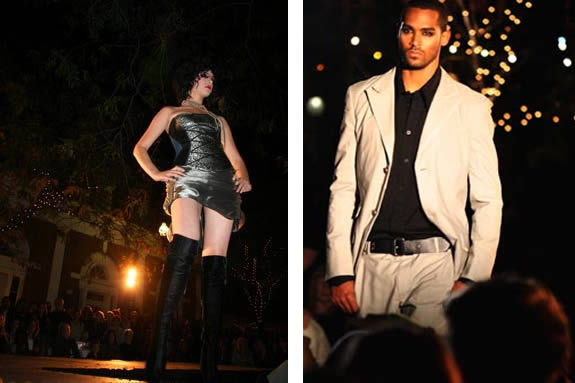
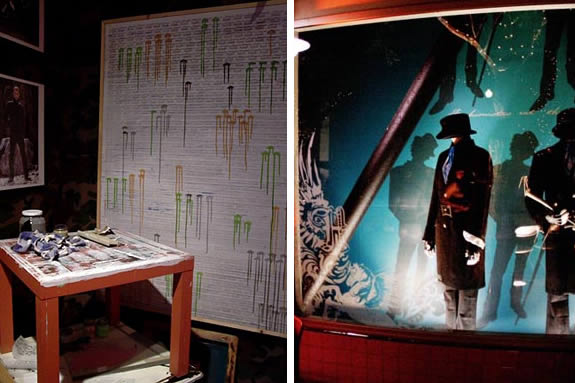
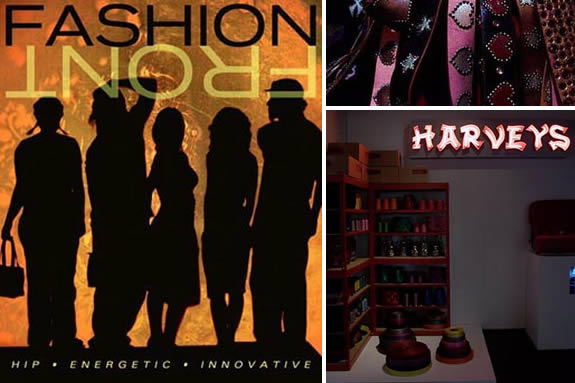
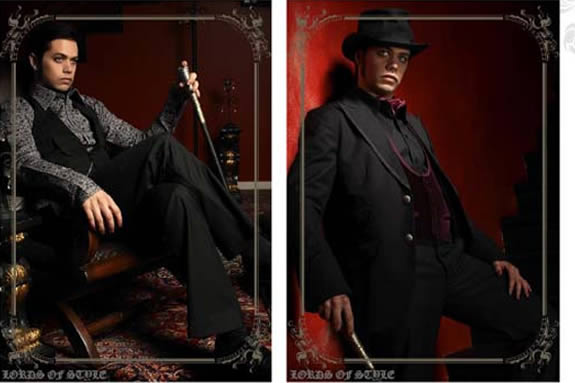
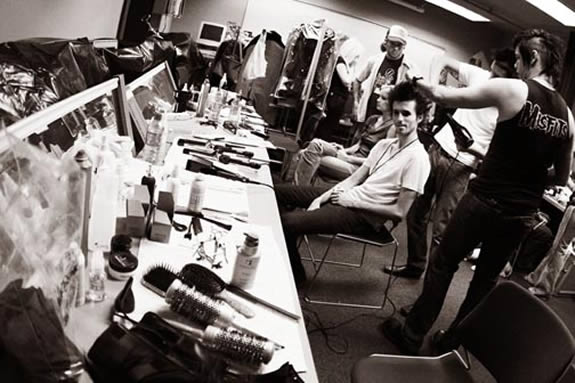
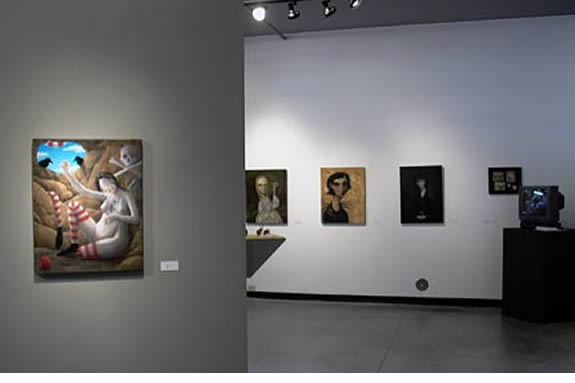
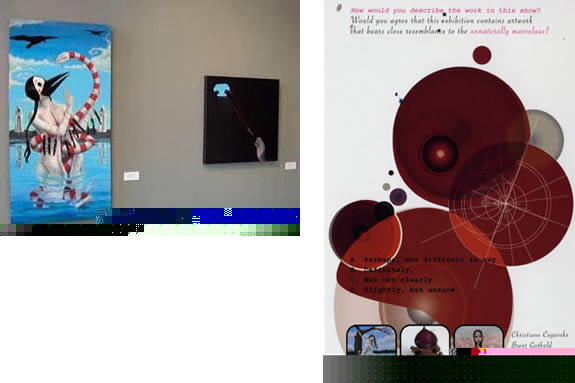
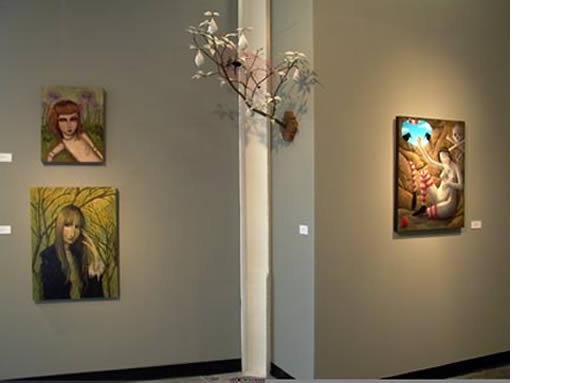
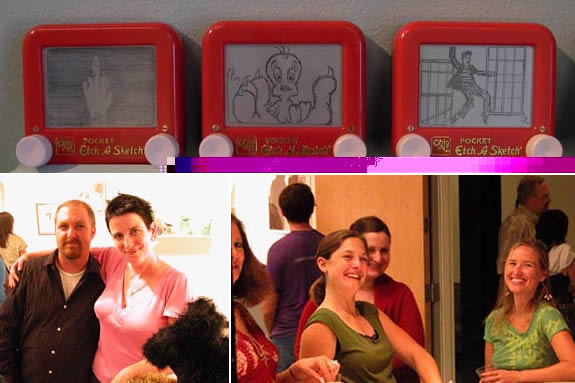
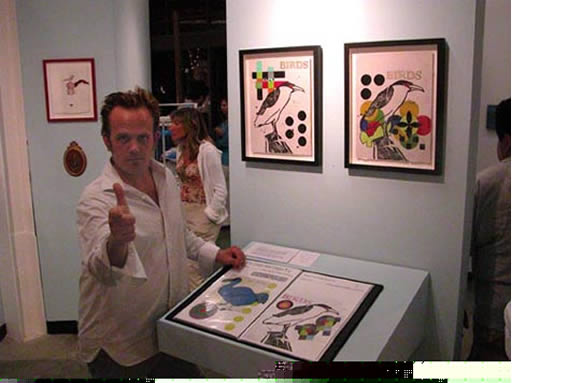
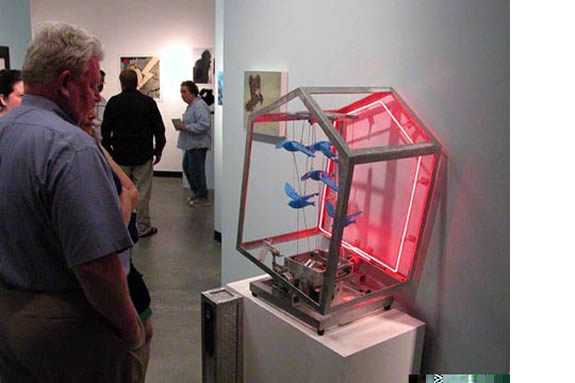
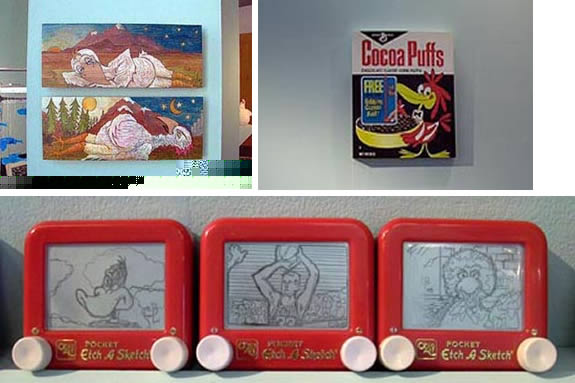
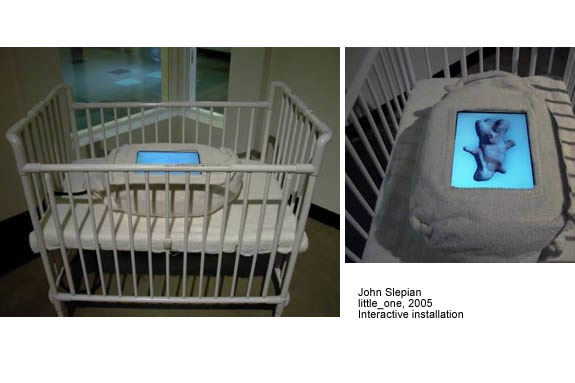
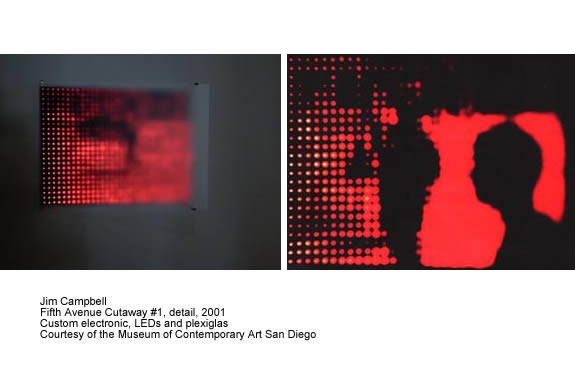
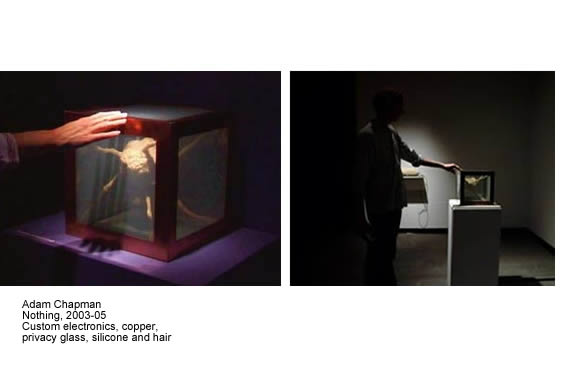
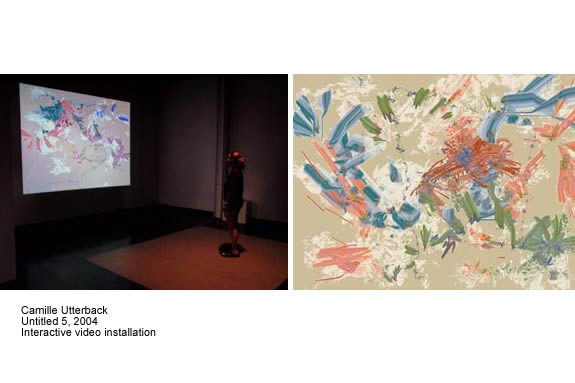
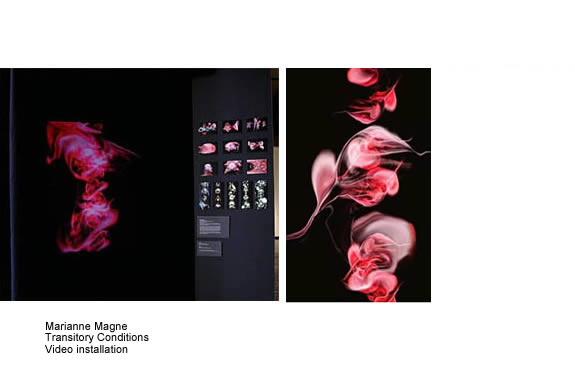
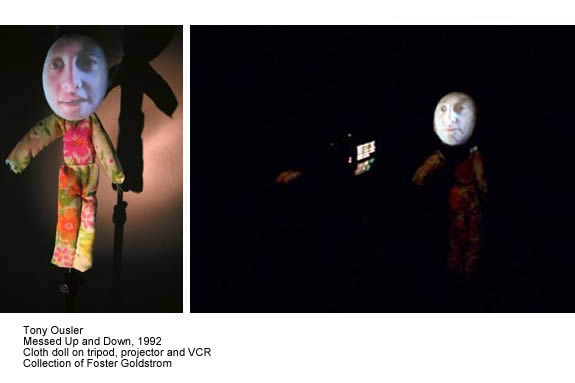
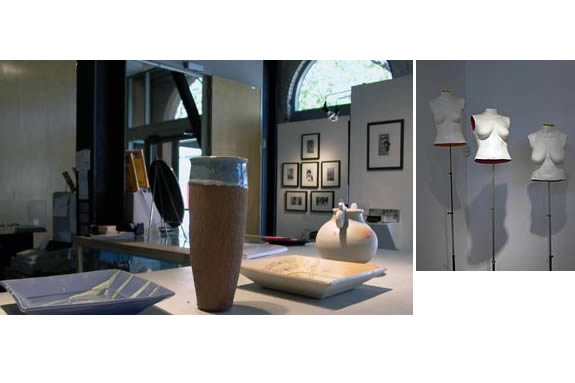
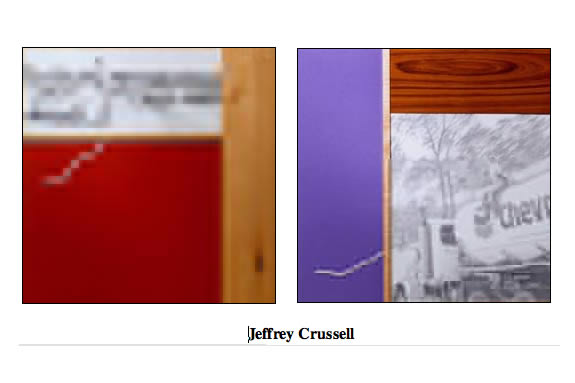
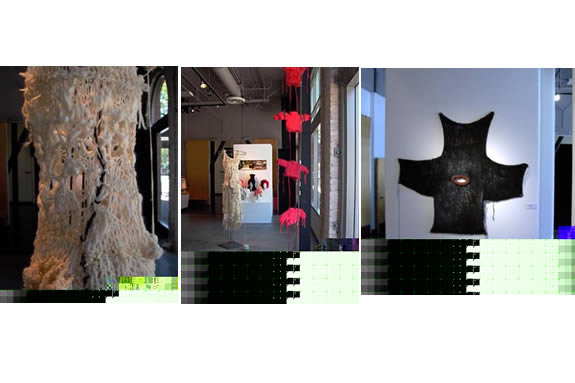
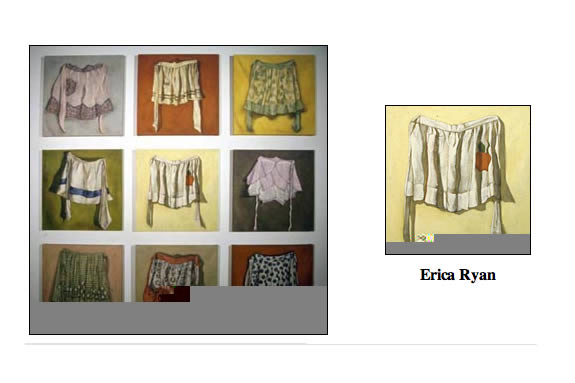
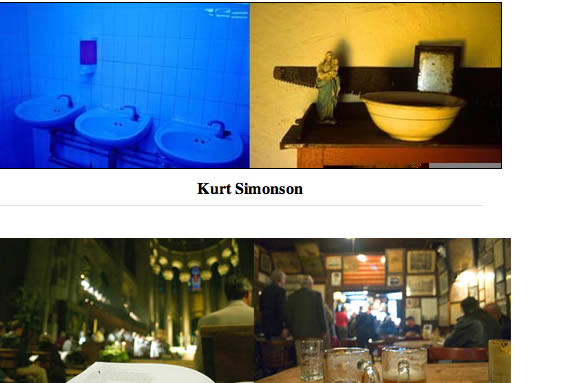
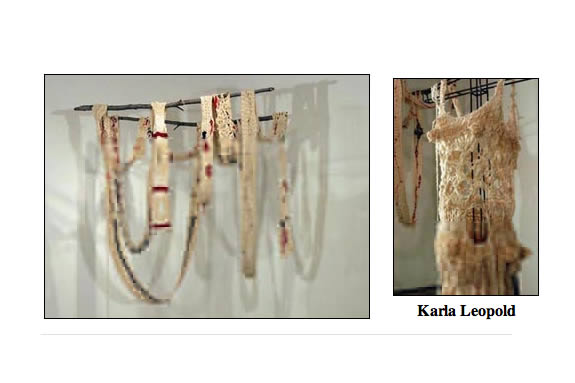
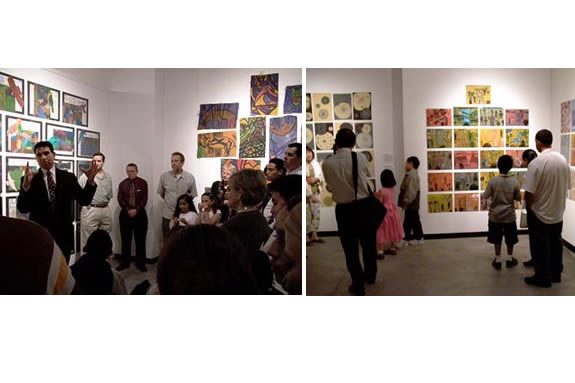
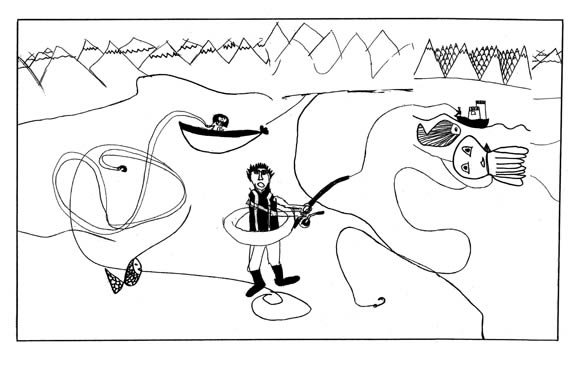
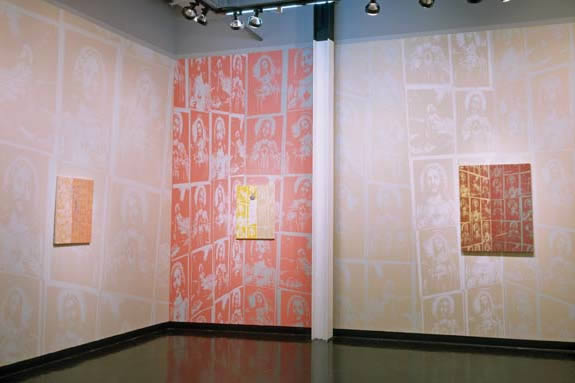
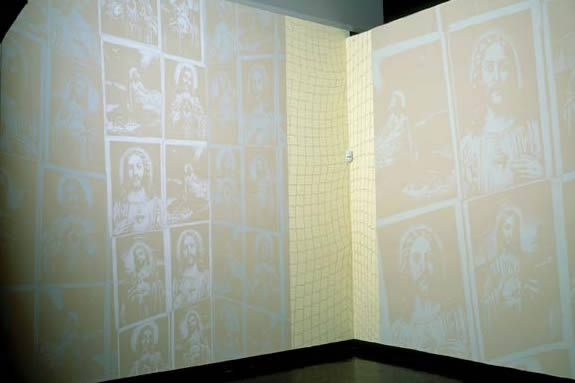
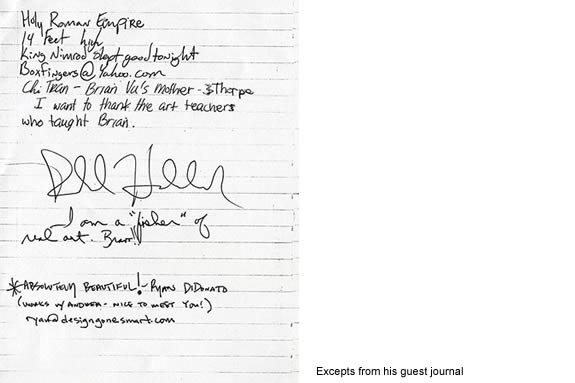
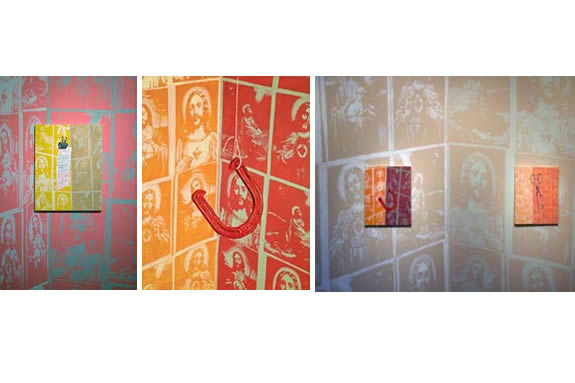
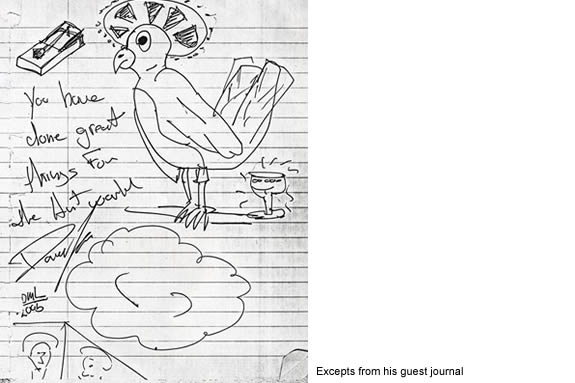
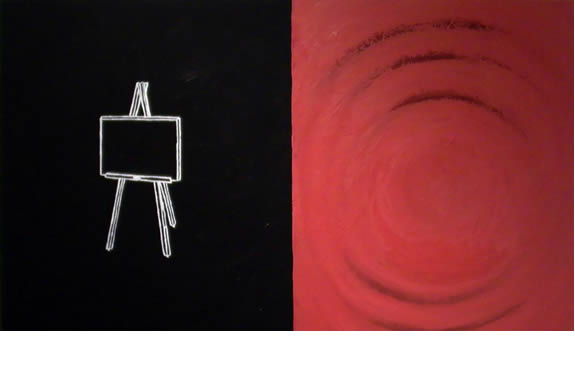
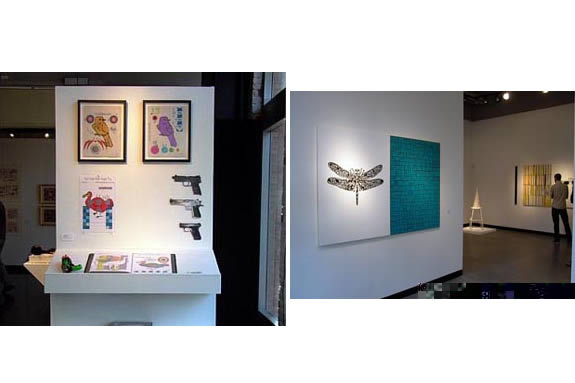
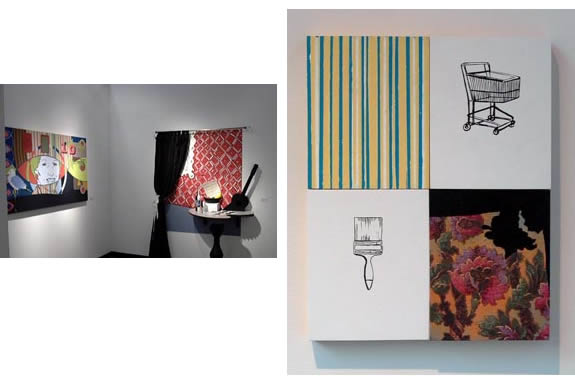
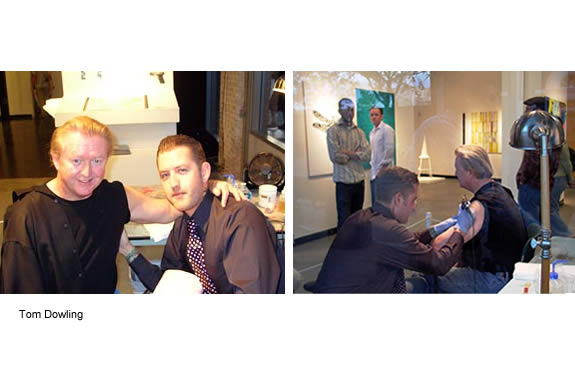
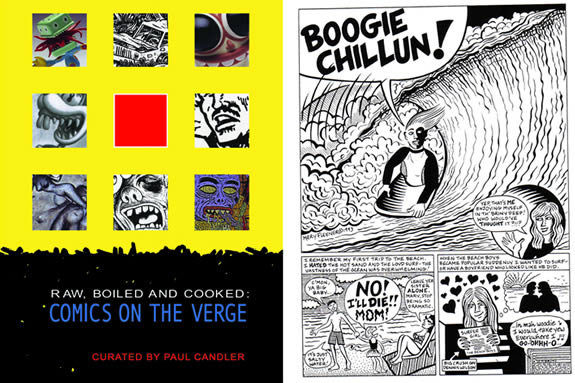
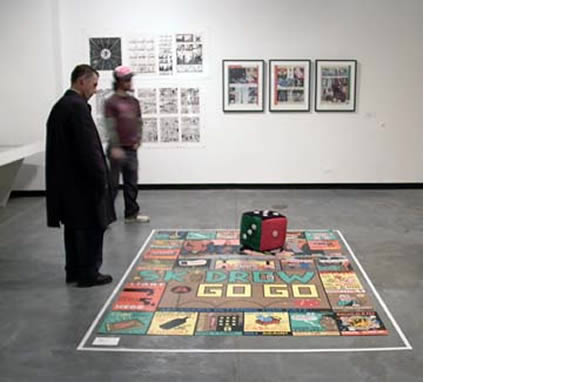
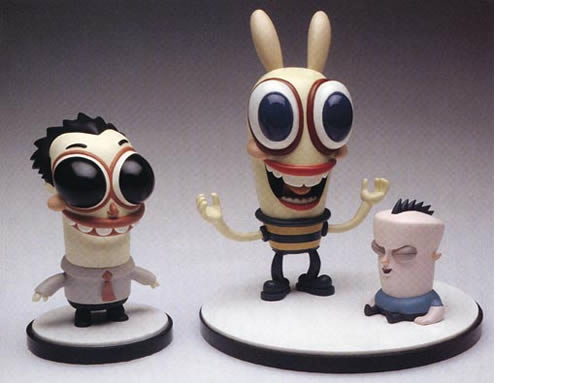
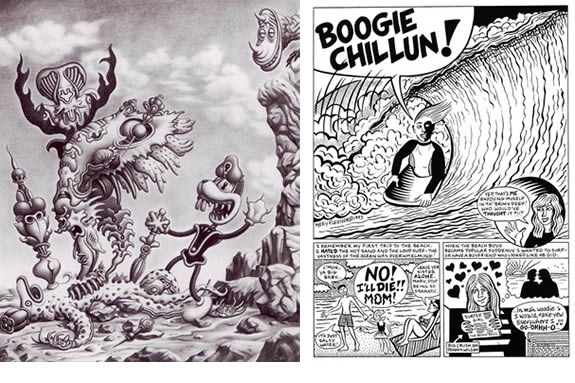
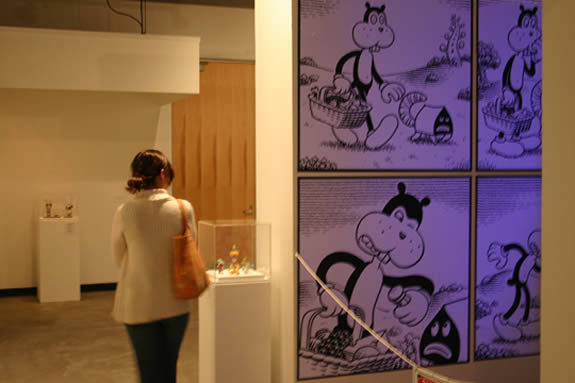
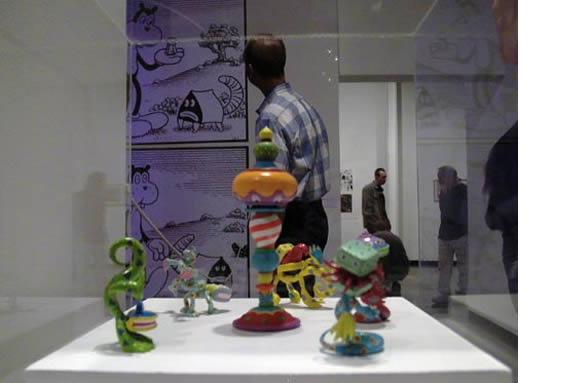
![[shudder] release. four separate images](http://www.grandcentralartcenter.com/wp-content/uploads/2014/03/shutter_release_2005_a.jpg)
![[shudder] release. four separate images.](http://www.grandcentralartcenter.com/wp-content/uploads/2014/03/shutter_release_2005_b.jpg)
![[shudder] release. black and white images of hole in the sky](http://www.grandcentralartcenter.com/wp-content/uploads/2014/03/shutter_release_2005_c.jpg)
![[shudder] release black and white images of sky opening up](http://www.grandcentralartcenter.com/wp-content/uploads/2014/03/shutter_release_2005_d.jpg)
